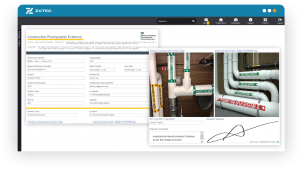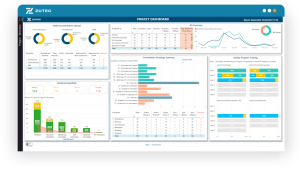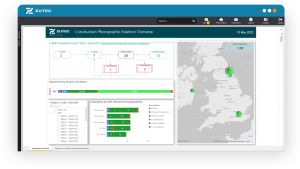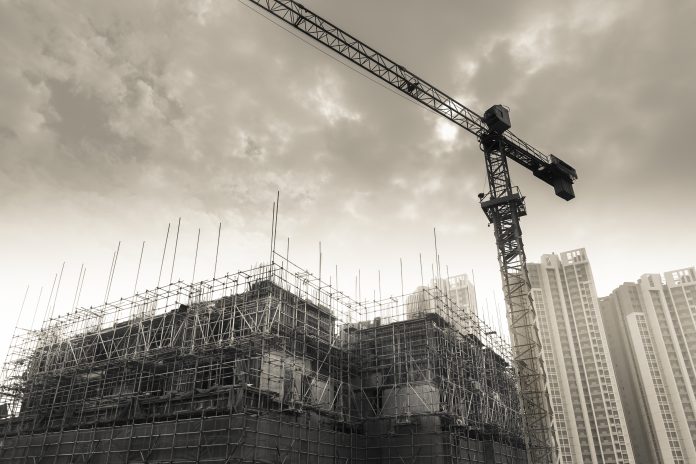Maria Hudson, CMO at Zutec looks at what’s new with the Part L 2021 Building Regulations and how a SaaS platform can help ensure mandatory photographic evidence compliance
It’s been a period of change and adaptability for the construction industry, particularly for housebuilders and developers. New and updated Building Regulations have come into force over the last few months that ensure safer, better performing and greener buildings and mean evolved working practices to meet regulatory compliance.
Today, it’s not only absolutely essential that housebuilders, developers and contractors understand what they need to do to meet standards and comply with these regulations; they also need to be a step ahead in terms of the adjustment period, how they make the process easy to achieve, how they produce and document evidence, and how they make evidence easily accessible to everyone that needs to see it – and the right tools and processes in place.
At Zutec, we’ve delved into these imminent regulatory changes, focusing on photographic evidence of the uplifted Part L standard (or Approved Document L 2021) or Building Regulation 40. With this regulation, all new homes registered in England and Wales must produce 31% less CO2 emissions on the current SAP model to meet compliance.
Part L 2021 provides an interim improvement in energy efficiency for individual dwellings being built in readiness for upcoming regulations such as the more rigorous Future Homes and Future Building Standard in 2025. This standard will complement existing Building Regulations and will be the turning point in which the UK government is hoping to reduce carbon emissions in new homes by 75%-80%.
The requirement to capture photographic evidence to comply with Part L 2021 is mandatory. Housebuilders and developers need to demonstrate that new builds and refurbished dwellings are constructed using materials, methods and technology that meet standards and ensure energy savings to reach targets.
Uplifted Part L 2021: What this means?
There are many components that form part of the process to make properties more energy efficient, but main changes to Part L 2021 include the following:
• Uplift in fabric insulation standards for all buildings.
• Increased energy standards for heating, hot water and ventilation systems for all buildings.
• Maximum primary energy rate – the new standard for all buildings.
• Greater focus on as-built construction to reduce the performance gap between design performance and as-built performance.
As part of the above list, low-carbon heating options, fabric and thermal insulation improvements, and new technology utilisation such as heat pumps, cooling systems and fixed lighting is expected to be used to reduce fuel consumption. Measures will not only help the government meet its climate change goals but tackle the problem of overheating, which will drive down costly bills for families.

Photographic evidence specifics
In order for SAP assessors to release EPCs (Energy Performance Certificates) and the new BREL Report (Building Regulation England Part L Report), housebuilders will need proof of work done. An on-site audit of building details and thermal elements will be required during construction and at completion for Building Regulation approval, including photographic evidence to confirm all new builds and refurbished dwellings are constructed correctly using materials and technology that ensure energy savings and meets building regulation standards.
Specific requirements for photographic evidence are outlined in Appendix B of Part L 2021 but, in short, photos are required to be taken during construction and prior to production of the EPC and BREL output compliance report. These photos must be unique to each property and property detail and ensure the as-built construction truly reflects that of the design stage SAP calculation to ensure the quality and installation is in accordance with best practice and the assumed performance.
Every photo taken and submitted to the assessor should be digital and high enough resolution to allow a qualitative audit of the subject. This means close-ups may be required, geolocation enabled to show the date, time and location of each image, and a file name to include plot number and reference according to the property detail so photos are traceable.
Part L requires all photos to be taken at appropriate stages of construction when each detail is completed and prior to closing up works. Moreover, technology should play a critical role, alongside a schedule and checklist provided to all site managers to ensure sufficient photographic evidence is collected and recorded. This schedule and checklist should be an incremental process as the building work takes place, as once work is complete on a build, it is virtually impossible to go back and retake photos without invasive procedures.
To neglect or omit these requirements can be costly and timely to the housebuilder or developer and may mean work has to be deconstructed and retrofitted. Non-compliance with the BREL report, which is required by the building control body for final work sign-off, also means a property can’t be ‘completed’ until it meets standards.

Construction SaaS platform
A construction SaaS platform, such as Zutec, provides a common data environment to support all your project management, review and evidence needs. It can be integrated with a site quality management programme and configured according to business needs and is the perfect solution to take geolocated photos from any mobile device while on site, ensuring photos match the project and location. Photos and correlating data can be centrally recorded and accessible by all key stakeholders, from the housebuilder to the owner, as well as SAP assessor as they inspect evidence on the road toward Part L 2021 compliance.
Data can be collected on-site without wi-fi and processed later, meaning one place where all photographic evidence and supporting documentation lives. Additionally, photos can be marked up and shared with team members and inspectors at any time, which means site managers can submit photos as they are captured so that evidence can be approved or sent back with feedback. If the work is not up to standard, it can be remediated before the build completes. If there are gaps in the evidence, it can be collected before completion. This speeds up the process ahead of the EPC and the BREL report being released and avoids retrofitting new homes, which is time-consuming and costly.
A solution such as Zutec can be up and running quickly and provides additional benefits, including analytics to assess evidence gaps, authenticity and audibility. Hence, you know who captured data, when and where, improved team communications, assignment of tasks and the ability close and sign-off installations. One tool for everything. As a completely configurable platform, it can be used for other upcoming regulations, as well as any quality management and digital handover use cases – providing a single source of truth so that housebuilders can demonstrate they are using the most efficient products and materials to build safe and performing homes.

The future of Part L 2021
All in all, Part L 2021 changes will ensure housebuilders and contractors meet higher standards as regulations get far more stringent. For the construction industry, Part L 2021 is the first step towards greater quality assurance, traceability and accountability to ensure the most efficient products and materials are used to close the gap between how energy-efficient buildings should be and how they perform in the real world and data is authentic and auditable, which can be used for other quality management and assurance purposes further down the line.
Maria Hudson
CMO
Zutec
Tel: +44 7967813429
*Please note: This is a commercial profile

















